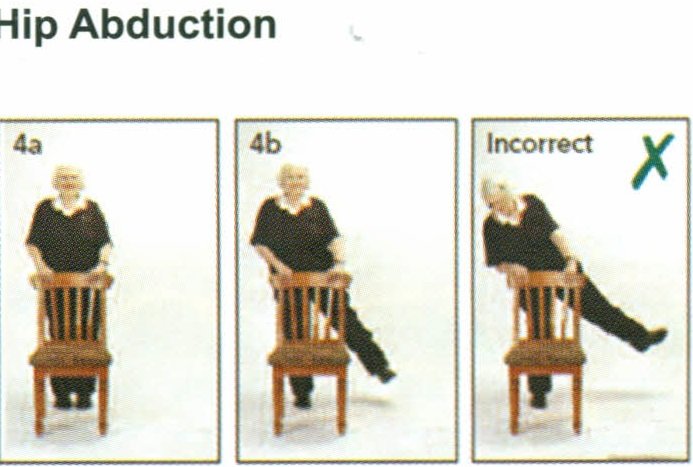OSTEOPOROSIS: BUO – BUTO SA LANGIT – Exercise and Osteoporosis Part I
Ma. Luz Vicenta V. Guanzon, MD, FPCp, FPSEM
Osteoporosis means the bone becomes brittle such that it can break even at the slightest amount of pressure. It means that even just falling from a standing position can result in fracture in an osteoporotic individual. What is vital in osteoporosis is prevention of fractures. Calcium-rich diet, sunlight exposure, and proper exercise can all prevent osteoporosis from occurring.
It is a common misnomer that if you have osteopenia or osteoporosis exercise is discouraged because of the fear of fracture. On the contrary, exercise is encouraged so as to promote muscle strength, improve •coordination and balance, and therefore prevent the chances of falling. There are exercises which can promote bone health which are suitable to people with or without osteoporosis, and which can be performed anywhere, without the need to enrol one’s self in the gym, and with or without using exercise aids, such as dumbbells, leg weights, vestibular balls. The following simple exercises developed by Prof. Maria Fiatarone Singh are taken from Australian Organization for Osteoporosis hand outs for consumer use.
TYPES OF EXERCISE THAT PROMOTE BONE HEALTH
Weight-bearing aerobic exercise
Weight-bearing exercises are those that use the large muscle groups in a rhythmic pattern and are performed in a standing position. These exercises should be done at a rate that increases your heart rate, blood pressure and breathing to at least a ‘moderately hard’ level. Examples are brisk walking, hiking, stair climbing, jogging and aerobic dance. Swimming, cycling, seated exercises and arm exercises are non-weight-bearing aerobic exercises and have little effect on bone health. Aerobic exercise is also known as endurance or cardiovascular exercise.
Resistance training
Resistance training is also known as strength training or weight lifting. It is the use of targeted muscle groups to lift and lower moderate to heavy weights. In traditional weight lifting, the weight is lifted and lowered slowly; in power training, it is lifted as fast as possible and then lowered slowly. Exercises can be machined-based (e.g. leg press, seated rowing, pull down and knee extension) or done using free weights, i.e. dumbbells or ankle weights (e.g. knee extension and flexion, hip extension, flexion and abduction, leg raises, shoulder strengthening, biceps curl and triceps lift).
EXERCISE & OSTEOPOROSIS FRACTURE PREVENTION
Enhancing balance
If necessary, hold on to the back of the chair for support weight lifting exercises performed in the standing position, such as hip extension, flexion and abduction. As your balance improves, progress on using two hands on the chair to one hand, one fingertip, no hands, and then no hands and eyes closed.
Enhancing bone growth and strength
The rest period between sets of weight lifting exercises can be used for high impact exercise. For example, perform one jump between each set, aiming for a total of about 20 to 60 jumps per week. If wearing ankle weights, keep them on for the jump.
EXERCISING WITHOUT ANY EQUIPMENT
You can incorporate balance and high impact exercises into your daily activities if you don’t have access to weight lifting and other equipment. Some simple exercises are listed here.
• Stand on one leg whenever you are standing at a sink or counter or in a queue.
• Walk heel-ta-toe between rooms (place the heel of one foot directly in front of the toes of the other foot, so that they touch or almost touch).
• Stand up and sit down slowly without using your arms.
• Squat to pick up items or reach into low shelves or drawers, rather than bending over.
• Jump up and down steps and stairs using both feet to land; advance to one leg hops. If your balance is poor, start holding on to a railing.
• Lift items with one hand instead of both.
•Avoid having poor posture, particularly forward flexion of the spine. To improve your sitting posture, sit on a Swiss ball or a backless chair.
STRENGTH TRAINING EXERCISES
You should do two or three sets of eight repetitions of each exercise per session, and two or three sessions per week. In the rest period of at least a minute between each set, you should do one jump or heel drop (see photo 14).
Each session should take 30 to 45 minutes. Each of the exercise descriptions below counts as one repetition.
Strengthens the ankle and the calf muscles.

1. Wearing ankle weights, stand holding the back of a chair.
2. Lifting your heels, rise up on the toes of both feet, as high as possible.
3. Hold, then slowly lower your heels.
4. When this is too easy, use one leg at a time, alternately (photo 2c).
Knee flexion
Strengthens the hamstring muscles, which bend the knee.

1. Wearing ankle weights, stand holding the back of a chair, close to it.
2. Bend one knee and slowly lift this food backwards to as close to the back of your thigh as possible. Keep the upper part of your leg still, and your body upright.
3. Hold, then slowly lower your leg.
4. Repeat for the other leg.
Hip Abduction
Strengthens the muscles that pull the legs out to the side.

1. Wearing ankle weights, stand holding the back of a chair, close to it.
2. Without bending your knee or waist, move one leg straight out to the side, keeping your toes pointing forwards.
3. Hold, then slowly lower your leg.
4. Repeat for the other leg.
Knee extension
Strengthens the quadriceps muscle, which straightens the knee.

1. Wearing ankle weights, sit in a chair with a good upright posture and the back of your knees resting against the chair seat.
2. Raise one foot in front of you until your knee is as straight as possible, keeping your thigh on the chair and your toes pointing up. Pull your toes towards your head as far as possible.
3. Hold, then slowly lower your leg.
4. Repeat for the other leg.
The following are exercises which can help improve balance.
BALANCE EXERCISES
Balance exercises are best done before strength training exercises to minimize fatigue and the risk of falling. You should do one set of five repetitions of each exercise per session.
Tandem walking
Also known as heel-to-toe walking.
1. Walk for 3 to 4 metres placing the heel of one foot directly in front of the other, placing your feet parallel to each other with the toes level.
2. Have a chair, rail or another person close by in case of overbalancing.
Crossover walking
1. Walk sideways for 3 to 4 metres crossing one leg in front of the other, placing your feet parallel to each other with the toes level.
2. Have a chair, rail or another person close by in case of overbalancing.
Sideways stepping over object
1. Walk sideways over three or four objects of differing heights, placing your feet parallel to each other with the toes level.
2. Have a chair, rail or another person close by in case of overbalancing
Standing on one leg, eyes closed
1. With your eyes close and one hand resting on the back of a chair for support, stand on one leg for 30 seconds.
2. Repeat for the other leg.
3. To increase difficulty, add a mental task such as naming animals or subtracting 7’s from 200.
4. To further increase the difficulty, reduce the hand support from one hand to one finger to one fingertip to no hands.
This guide is based on ‘Patient Handouts’ by Professor Maria A. Fiatarone Singh that were first published in Medicine Today in February 2007 (Medicine Today 2007; 8(2): 61-64) and in March 2007 (Medicine Today 2007; 8(3): 69-74).
Osteoporosis Australia gratefully acknowledges Medicine Today for providing this material for print.
MARIA A. FIATORONE SINGH MD, FRACP
Professor Fiatarone Singh is the John Sutton Chair of Exercise and Sport Science, Exercise, Health and Performance Research Group, Faculty of Health Sciences, University of Sydney, and Professor of Medicine, University of Sydney, NSW She is also Senior Research Associate, Hebrew SeniorLife, Boston, and Visiting Scientist, Jean Mayer USOA Human Nutrition Research Center on Aging at Tufts University, Boston, USA.
See more Endocrine Hotspots Editions at endo-society.org.ph/endocrine-hotspots
Brought to you by the Philippine College of Endocrinology Diabetes and Metabolism (PCEDM)
Website: endo-society.org.ph
IG: @endocsociety
Twitter: @EndoSoc_ph
Facebook: fb.com/filipinoendocrinologists



